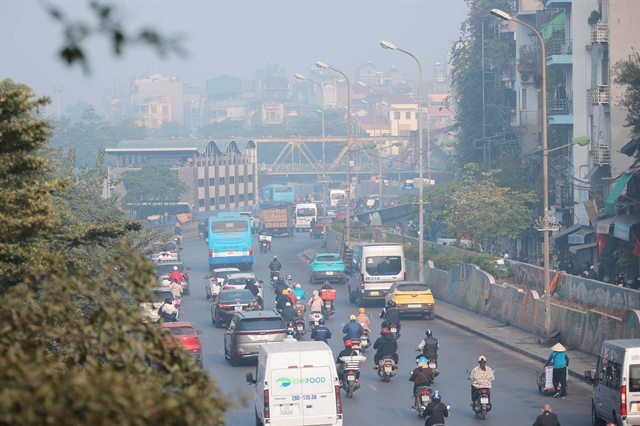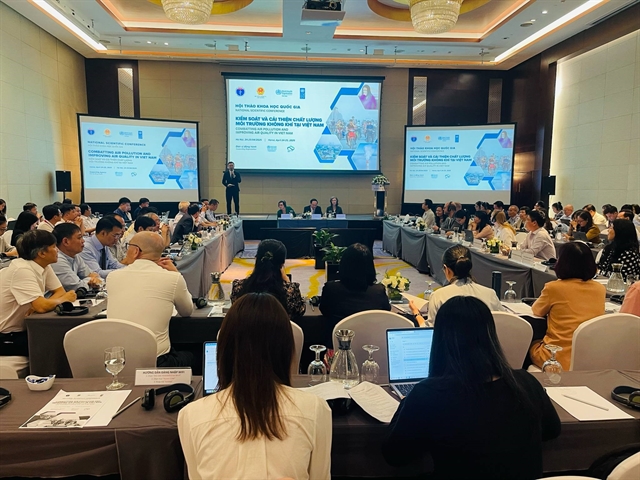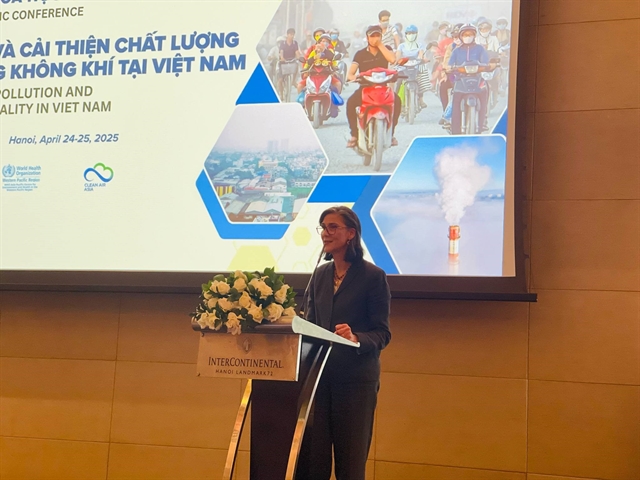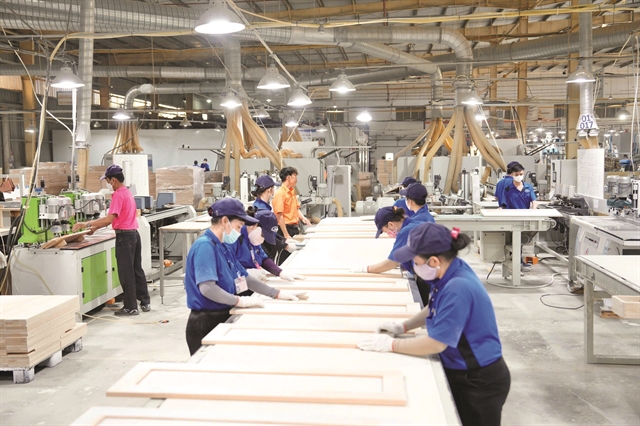 Environment
Environment

 |
| Experts attend the national scientific conference on air quality control. — VNS Photo Thu Trang |
HÀ NỘI — Air pollution is one of the serious environmental challenges in Việt Nam, especially in large cities such as Hà Nội and HCM City, said Deputy Minister of Agriculture and Environment Lê Công Thành.
Speaking at the national scientific conference on air quality control, which was held on Thursday in Hà Nội, Thành said that monitoring data and air quality index in these cities were often at an average level and tended to be poor, with increased pollution in recent periods.
The concentration of Particulate Matter 2.5 (PM2.5) fine dust in these two cities often exceeds the national technical standards on ambient air quality and greatly exceeds the World Health Organization (WHO) recommendations.
“Air pollution not only lasts seasonally, but also spreads spatially, directly affecting people's health, socio-economic development and daily life,” said Thành.
He confirmed that the causes of air pollution came from many different sources, including emissions from vehicles using fossil fuels, construction and urban infrastructure renovation activities, emissions from industrial production facilities, and outdoor burning of straw, waste and biomass.
In Hà Nội, air pollution often increases sharply from September to April of the following year due to unfavourable weather factors, whereas in HCM City, many assessments and studies suggest that high traffic density and industrial activities are the main causes.
“Besides, dust from agricultural activities, forest fires, and smoke from surrounding countries also spread and contribute to increasing pollution,” said Thành.
Solutions
 |
| Deputy Minister of Agriculture and Environment Lê Công Thành gives instruction at the conference. — VNS Photo Thu Trang |
Faced with the increasing air pollution, the Ministry of Agriculture and Environment (MAE), with the Department of Environment as the focal point, has been coordinating with ministries, localities and enterprises to implement many key tasks.
“We develop projects to inventory emissions in key economic regions nationwide to serve the work of analysing and evaluating data, building models and scenarios for forecasting air pollution. We are currently testing a 48-hour air quality forecasting model at the Northern Environmental Monitoring Centre,” said Thành.
The MAE is finalising the National Action Plan to overcome pollution and manage air quality, with specific goals for the 2025-30 period, with different group of solutions such as energy, waste sources, transportation and construction.
It has also proactively carried out cooperation with international organisations to conduct pilot projects, develop a network of rapid air quality measurement stations, promote technology transfer and green transportation to improve air quality.
“Improving air quality is not the sole responsibility of the MAE, but a shared task of all ministries, localities, organisations and communities. In addition to the goal of double-digit economic growth in the coming period, we will also have to pay attention to environmental protection. Right now, we need to work together to preserve the blue sky, protect people's health and build a sustainable living environment,” said Thành.
International cooperation
 |
| Ramla Khalidi, UNDP Việt Nam Resident Representative, speaks at the conference. — VNS Photo Thu Trang |
The United Nation Development Programme (UNDP) Việt Nam Resident Representative, Ramla Khalidi, confirmed: “ Air is life. And the quality of the air we breathe affects the quality of our life.”
Ramla remembered that several years ago, she was driving from a visit to the mountains above Beirut. As she wound her way down to the coast, she could see herself literally entering the cloud of smog that clung heavy over the city and become one of the millions suffocated by the fumes. That image stays with her.
“And now, I find myself once again concerned about air pollution. About its impacts on health, socio-economic development and missed opportunities. And I know I am not alone,” she said.
UNDP’s latest Public Administration Performance Index (PAPI) found a 7-per-cent decline in positive views of air quality in Hà Nội over the past two years. In HCM City, there was a 3-per-cent decline over the same period.
“I believe these results reflect growing awareness about air pollution, not just in Việt Nam but throughout the region and the world. I wish to acknowledge and appreciate the Government’s commitment to tackling air pollution,” said Ramla.
“Tackling air pollution requires deepening our understanding, and strengthening the scientific evidence base that must underpin our approach,” she said.
It requires improving monitoring and forecasting, and strengthening emissions inventories as a basis for addressing key pollution sources. And it requires a multi-stakeholder, multi-sector approach, under Government leadership, with effective coordination between central and local levels and with key sectors, enterprises, universities, the media and community partners.
The first Government Resolution of 2025 called for urgent action on air pollution.
In support of these efforts, UNDP and WHO have developed an integrated offer to support national, city and provincial authorities in Việt Nam to strengthen governance and data for air quality management, address air pollution sources and enhance public engagement.
“Addressing air pollution is closely linked to our efforts on climate change and green transition, and the climate-health nexus. And it reflects our shared commitment to leaving no-one behind, including those most vulnerable to air pollution impacts – children, the elderly, poor households and others,” she said. — VNS




